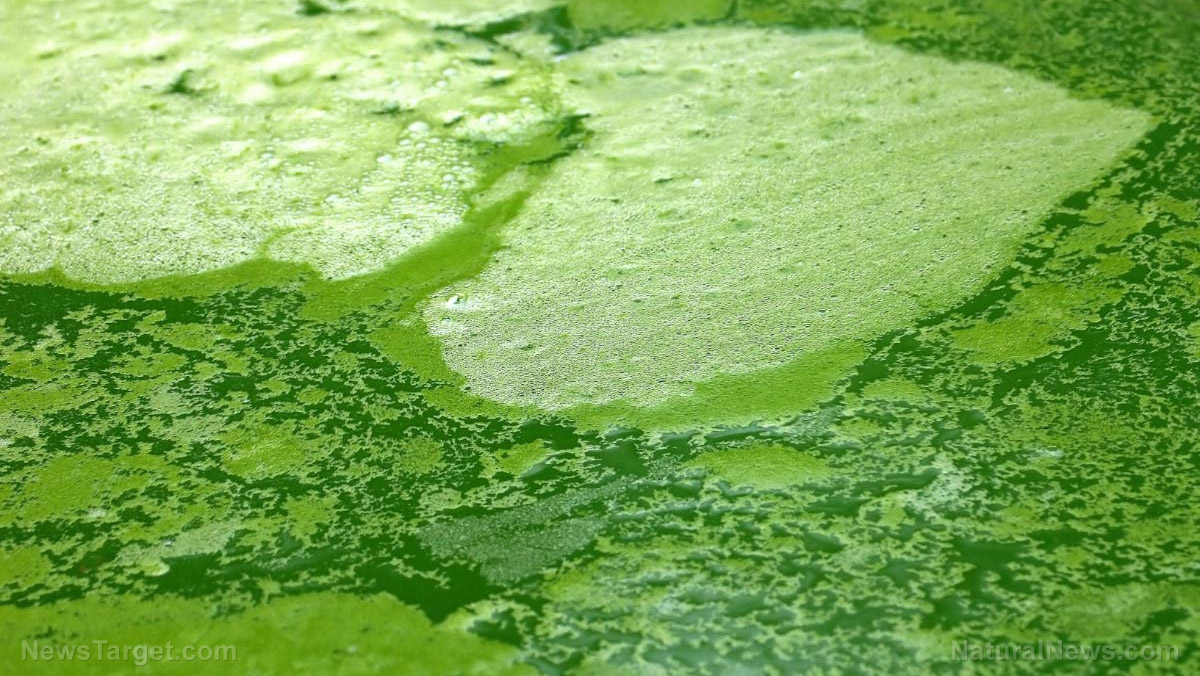
The official narrative of government officials and the mainstream media is that these two events have nothing to do with each other. Sources within the independent media insist, however, that the red tides – more accurately known as harmful algal blooms (HABs) – are being fed by the toxic green algae overflowing from Lake Okeechobee and making its way to the oceans. And that toxic green sludge is being caused by the activities of farmers and big corporations in the vicinity of the lake.
But, what exactly are harmful algal blooms? What feeds them? Why are they so harmful? And is there a scientifically proven connection between green algae and HABs?
What’s really going on in the Sunshine State?
Toxic green sludge
The first big problem Florida is facing is toxic green algal sludge which has become widespread, leaving a trail of destruction in rivers and along beaches.
The floor of Lake Okeechobee – which at 730 square miles is the largest freshwater lake in Florida – is coated in toxic mud created by extremely high levels of arsenic and pesticides. To protect the lake’s aging dike and prevent danger to surrounding communities, when water levels rise, the Army Corps of Engineers pumps billions of gallons out of the lake via the St. Lucie River estuary and the Caloosahatchee river. This disturbs the natural mix of salt and fresh water normally found in these waterways, introducing a large amount of polluted freshwater and causing serious ecological damage. This water is thickly coated in toxic green algae, which many experts believe is fed by runoff from sugar plantations in the area. Runoff from farming activities in the lake’s vicinity also pumps toxic chemicals and pesticides into the lake.
Big sugar, the farming community and the government, of course, vehemently deny these allegations.
The toxic green sludge is then carried along by rivers and other inland waterways all the way to the Florida coastline, leaving destruction in its wake.
Floridians are angry and distressed by the situation. As NBC News reported:
A green film of cyanobacteria appeared, as it regularly does in summer, in vast Lake Okeechobee. But this year the bacteria also spilled over into rivers and canals, which carried the toxic green sludge east to the Atlantic Ocean and west to the Gulf of Mexico. Already distressed Floridians gagged on the noxious odor, and more than a dozen people reportedly went to local emergency rooms after coming into contact with the contaminated water. Some wept as beloved manatees expired, bloated and tinted a ghastly green.
The toxic blue-green algae carry some serious health risks, too. The Florida Department of Health warned:
Exposure can happen through unintentionally swallowing lake or river water, breathing water spray or coming into direct contact with the blooms. At high levels, these can affect the gastrointestinal tract, liver, nervous system, and skin.
The health department recommends avoiding all contact with algal blooms, and warns that pets and children are particularly vulnerable to its effects.
Dangerous red tides in the Gulf of Mexico
The second big disaster Florida is facing is a red tide (HAB) in the southwestern part of the state which has killed fish, turtles, manatees and other ocean life. It has also resulted in beaches being closed, local businesses shutting down temporarily, and many residents developing respiratory problems. Red tide can cause skin irritation, coughing, sneezing and other symptoms in humans, though it does not generally have serious long-term effects.
So, what exactly is a red tide?
Red tide, which scientists call a harmful algae bloom, is caused by a naturally occurring alga (a plant-like microogranism) called Karenia brevis or K. brevis. When K. brevis appears in large quantities – typically in the Gulf of Mexico – it can turn ocean water red, brown or green.
Red tides are not new to Florida. In fact, as reported by NBC News, there are historical accounts dating back to the 1500s which confirm that this problem has a very long history. Nonetheless, though the mainstream media has tried desperately to insist otherwise, scientists note that HABs have increased in both frequency and duration in the past two decades.
“Many people will tell you that this is the worst they have ever seen,” said Jacylin Bevis, a reporter with WBBH-TV. “It’s our entire south Florida coastline with the red tide and then with the blue-green algae on the rivers and canals."
Is there a connection between the green algae and the red tides?
Interestingly, USA Today explains that a red tide is “caused by a combination of conditions, including wind, currents, and the presence of nutrients that allow the algae to grow.” [Emphasis added]
Despite the media and government insistence that these two events are not linked – “nothing to see here,” they insist – there is scientific evidence that the type of algae that make up the red tide (Karenia brevis) are fed by the green algae (Synechoccus) being pumped out of Lake Okeechobee.
An article published in the journal Aquatic Microbial Ecology in 2009 noted:
Grazing by K. brevis thus enhances the range of nutritional substrates available to meet its growth requirements, and may play a substantial role in sustaining natural populations in inorganic N-poor waters. With evidence that blooms of Synechococcus can be enhanced due to anthropogenic nutrients, the potential importance of this particulate nutrient source for sustaining red tide blooms in situ is large and may help to resolve the current uncertainty as to how K. brevis blooms are maintained. It can now be hypothesized that as cyanobacterial blooms increase, so too does the potential for Karenia brevis growth to be enhanced and for blooms to be sustained through grazing, especially under the low light conditions associated with bloom self-shading.
With special interest groups hiding in the shadows, it is hardly surprising that the mainstream media is choosing to report these two events as isolated incidents. Nonetheless, the scientific evidence – and the law of coincidence – show conclusively that mismanagement by Big Sugar and a lack of care by the farming community are solidly to blame for the dual disasters being battled by the state of Florida. With everybody in denial, Floridians should brace themselves for worse to come.
Sources include:
Please contact us for more information.























